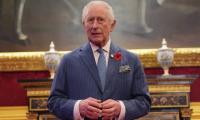As Greece exits its third bailout and the world commemorates the 10th anniversary of the collapse of Lehman Brothers amid the longest bull run in US stock market history, it may be tempting to think that the global financial crisis is now well and truly behind us.
And yet, in the bewildering world of international finance, as in any ordinary casino, the appearance of an uninterrupted winning streak often turns out to be deceiving. Investors and policymakers learned this the hard way in 2008. But if the recent crash of the Turkish lira is anything to go by, they may be in for another painful reminder.
While jittery foreign exchange markets appear to have stabilised somewhat over the past week, following limited action by the Turkish central bank and a pledge of $15bn in direct investments by Qatar, significant damage has already been done to the Turkish economy. The lira is now down 40 percent to the US dollar this year, raising widespread concerns over the sustainability of the country’s sizeable dollar-denominated debts.
The immediate cause of Turkey’s troubles is clear enough: earlier this month, the US government imposed sanctions against its Nato ally in response to its continued detention of an American evangelical pastor accused of involvement in the attempted coup of 2016. The announcement by the Trump administration of a doubling of steel and aluminium tariffs on August 10 immediately sent the lira into a tailspin.
The crisis has since been aggravated by investors’ fears stemming from Turkish President Recep Tayyip Erdogan’s aggressive criticism of what he calls the “interest rate lobby” and his long-standing opposition to raising interest rates – a measure Turkey’s central bank has nevertheless had to press forward with a number of times over the past year.
At first sight, the recent market convulsions would therefore appear to be a uniquely Turkish problem, triggered by an extraordinary standoff between two populist strongmen, Donald Trump and Recep Tayyip Erdogan, and worsened by the eccentric economic world view of the latter. In truth, however, Turkey’s problems are far from idiosyncratic. Coming on the heels of recent interventions of the International Monetary Fund (IMF) in Argentina and Pakistan, they clearly reflect a set of deeper vulnerabilities in the emerging-market asset class as a whole.
As a matter of fact, Turkey’s economic troubles have been a long time in the making, and are tightly interwoven with underlying weaknesses in the world economy resulting from the unintended side-effects of the international response to the global financial crisis of 2008.
After Lehman Brothers collapsed, exactly 10 years ago next month, the world’s leading central banks responded by reducing interest rates to historic lows and buying up massive amounts of low-risk assets from private banks, thereby effectively pumping $15 trillion in new money into the global financial system – a policy known as “quantitative easing” (QE).
With financial institutions now bathing in excess liquidity, traders and investors went on a global quest for yield. Some poured their money into the US stock market, feeding the current bull run. Others pumped it into real estate, fuelling the housing boom in global cities like London and San Francisco. Others still used it to buy corporate bonds or speculate on student loans and complex packages of subprime car loans.
A significant share of the money generated by QE, however, found its way abroad – in the form of loans to and direct investments in emerging markets, where profit margins were often considerably higher than in the developed world. For the better part of the past decade, Turkey was one of the main beneficiaries of this tidal wave of cheap money.
The article has been excerpted from: ‘Turkey’s lira turmoil could herald a global financial crisis’.
Courtesy: Aljazeera.com















